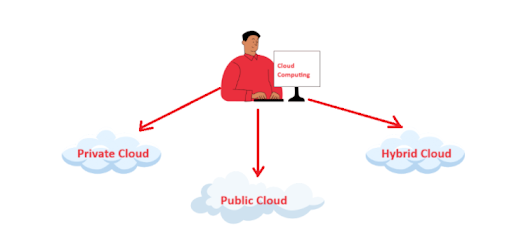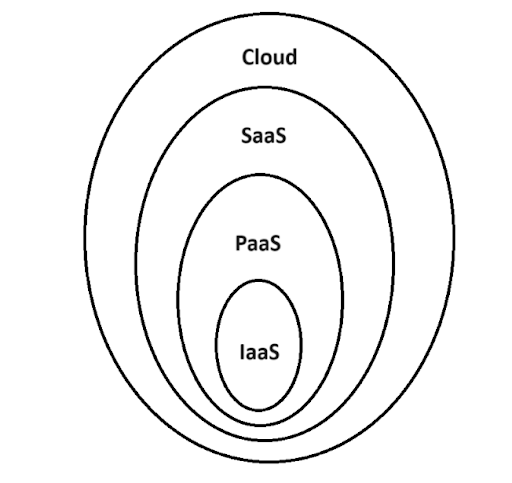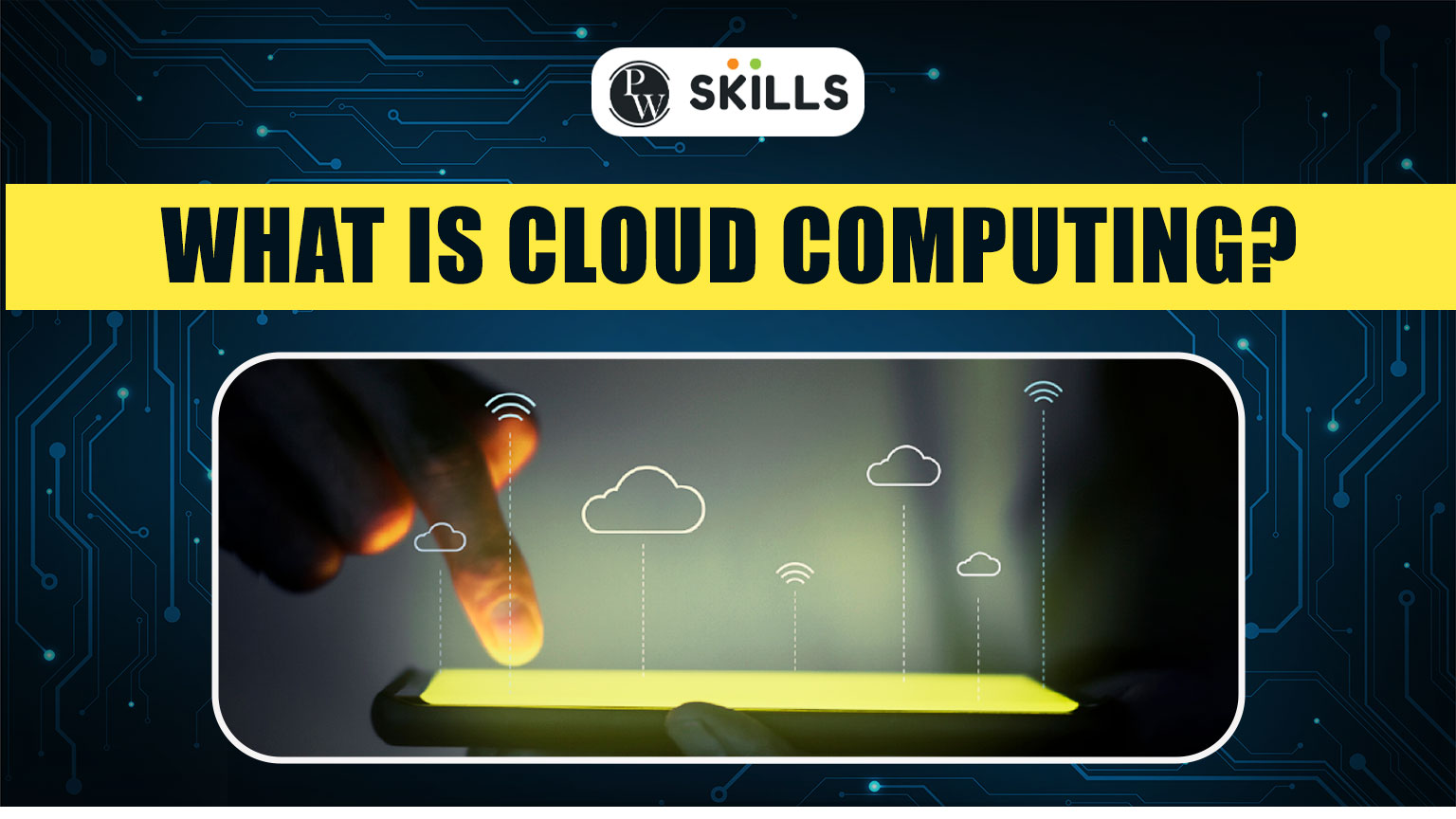Gone are the days when we used to store everything on our limited storage computer systems. Now, Cloud computing has reformed the way we keep our data and provided a way to access our data and various services from any part of the world.
Cloud Computing is a technology that allows users to utilize various resources, such as storage, networking, software applications, databases, etc over the internet. It provides businesses with efficiency, scalability, and security, at a very reasonable price.
What is Cloud Computing?
Cloud Computing is a technology that delivers various IT services (servers, networking, software applications, analytics and data storage facilities directly over the Internet to offer efficient resources and services. You can access all your personal data or services from anywhere remotely. It is usually a pay-per-use service, meaning that you pay only for the usage that you make.
Highlights:
- Introduction to Cloud Computing: The content begins by explaining how cloud computing has revolutionized data storage and access, offering users the ability to access various resources and services over the internet. It highlights the efficiency, scalability, and cost-effectiveness that cloud computing provides.
- Need for Cloud Computing: It addresses the need for cloud computing, especially for businesses dealing with large amounts of data. By eliminating the need for maintaining separate data centers and teams, cloud computing reduces overhead costs and provides unlimited storage and services online.
- Users of Cloud Computing Services: The content outlines various applications of cloud computing across different sectors, such as individual users, businesses, developers, startups, government agencies, and e-commerce websites. It illustrates how cloud computing facilitates data backup, web application development, scalability for startups, and hosting critical government data.
- Working of Cloud Computing: It describes the working mechanism of cloud computing, highlighting the reduction in hardware and software demand on the user side, leading to increased scalability and efficiency. It explains the backend infrastructure of data centers and the front-end access provided to users.
- Types of Cloud Computing Deployment Models and Services: The content discusses different deployment models (Public, Private, Hybrid) and service models (PaaS, IaaS, SaaS) of cloud computing. It explains their features, benefits, and examples, providing a comprehensive understanding of the cloud computing landscape.
What is the Need for Cloud Computing?
Major companies produce and use a huge amount of data to grow their businesses. Handling such a huge amount of data is a tedious task. For every service, they need to maintain a separate data center with separate hardware, servers, licenses, and teams. Overall, the cost incurred was overhead, which reduced the profit margin.
Now, with cloud computing, you do not need to worry about setting up your data center, setting up a team, buying a license, etc. You can buy these services, which are available on the Internet and can be accessed remotely. Hence, cloud computing solves the biggest problem and provides unlimited storage and various services online.
Who uses Cloud Computing Services?
There are plenty of applications of Cloud Computing for various data-driven businesses these days. Some of the ways in which various organizations uses cloud computing are mentioned below.
- It can be used by any individual or company for various IT services or data storage, such as servers, networking, software applications, analytics, databases, etc.
- It is used by businesses to keep a backup of important information which can be accessed remotely from anywhere.
- It is also used by developers to build customer-facing web applications for designing, deploying web pages.
- It provides scalability and investment feasibility to startup by eliminating the need to purchase extra hardware, licenses, etc. They can use this capital for investments in other products and services.
- It is also used by government agencies to host important websites data online on servers. Maintaining the data of country with billions and billions of people is not feasible without cloud computing.
- E commerce websites nowadays use cloud computing to host their websites online and carry out major operations such as transactions, inventory, customer data, etc on server.
Cloud computing is rapidly replacing traditional mode of storage and services. Every businesses and service is shifting their system with the rapid change. It helps to increase efficiency, flexibility and scalability and also saves a lot of money on overhead expenses.
Working of Cloud Computing
Cloud computing eliminates the need to overload the cost of running applications. With the help of cloud computing, demand for hardware and software on the user side decreases, which effectively reduces load and increases scalability and efficiency by a considerably large amount.
On the backend side of cloud computing are the data centers, which consist of software, databases, hardware and setup. Now various services are connected through this main centre hub to active users who have access to the service. On the front end of cloud computing are the users who use these services on their computer or network.
Different Types of Cloud Computing Deployment Models
Some major types of cloud computing deployment models are given below.

1. Public Cloud
The Public Cloud Services are visible to the general public or multiple organisations with services such as storage, servers, storage, and software applications. But it does not mean that its services are free. They are less expensive but charge on a per use basis. It provides self service, multi tenancy, resource pooling, service accounting, securing applications, etc.
There are no restrictions on accessing and watching services on the public cloud. Users can access the services and resources of cloud services on a pay per use basis. Some major Public Cloud Services are Google Cloud Platform, IBM Cloud, Microsoft Azure, Amazon Web Services (AWS), etc.
2. Private Cloud
These cloud services are limited to limited organisations or people having access or proper authorization to use it. These services are not openly available and are run by on site servers. It is suitable when security, control are given more priority.
With these cloud services, organisations using them have full control over the cloud infrastructure and can optimise resources and services accordingly. It provides self service, virtualization, security and access control, service based access, elastic on demand capacity, etc.
It offers good security and is more reliable than public cloud services. Some examples of private cloud services are VMware vSphere, Microsoft Azure Stack, OpenStack, etc.
3. Hybrid Cloud
These types of cloud services provide the facilities of public as well as private cloud services. Organisations can communicate easily with public as well as private cloud services according to their needs.
Here, the consumer takes all the applications as per need and also keeps control in their own hands. It offers advantage of both clouds and lets consumers choose between them as per their needs.
Types of Cloud Computing Services
There are three major types of cloud computing services, given below in detail.
1. Platform as a Service (PaaS)
PaaS allows customers to deploy their own applications on the cloud infrastructure using various tools, libraries, services and programming supported by the cloud provider. The consumer has control over the deployed applications and can optimise them as needed. However, they do not have control over the cloud’s servers, networks, and operating systems.
2. Infrastructure as a Service (IaaS)
In this type of cloud computing service, consumers have control over operating systems, storage and applications. However, customers do not have any access to the cloud infrastructure.

3. Software as a Service (SaaS)
This model provides access to the applications hosted on the cloud infrastructure. These facilities are available to users through web browsers or a program interface. In this service, consumers have very little control over the cloud infrastructure but can make few optimization settings in applications hosted on the cloud.
Benefits of using Cloud Computing Services
Some major benefits of using cloud computing services are mentioned below.
- It eliminates the need to invest in costly hardware and various resources, which adds to the overall cost. With cloud computing, organizations can access resources, data storage, manipulation and controls all over the internet with no additional resource setup.
- It provides scalability to the organization by efficiently handling the up and downs of the requirements.
- Users are charged on pay per use basis, which means they are billed only when they use cloud resources or applications.
- Consumers or organizations can access their data and software applications running on the cloud from any location. All they need is an active internet connection.
- It provides a high level of reliability by providing disaster recovery solutions and protecting data from loss or damage.
- It provides regular software updates, fixes bugs and handles maintenance, which frees organizations from the burden of managing their cloud infrastructure services and allows them to focus on other important activities.
- It saves a lot of resources and operations costs for the organization and increases the efficiency of the resources in the data centre.
- It can provide complete control over cloud usage for administrators.
Major Challenges of Cloud Computing
Despite greater control and accessibility, remote access and much more cloud computing still have some major challenges, which are mentioned below.
- Consumers need to have an active internet connection to access the services of cloud infrastructure.
- Storing personal data over third party providers remotely consists of risks such as unauthorized access, data breaches, and various other vulnerabilities.
- Consumers are completely isolated from cloud services and data during downtime or server failures.
- Many cloud computing services charge upfront charges in addition to their uses, which can create unexpected expenses.
- Organizations need experts with knowledge of handling cloud computing services .
- Consumers have limited access to the backend infrastructure of cloud services. Customers need to depend on third party services to ensure security and reliability of their data.
Learn Cloud Computing with PW Skills
If you want to start your career as a cloud computing engineer, then enrol in our Devops and Cloud Computing Course to learn from the best faculty at a very affordable price.
This is an all in one course to become job ready and crack interviews in top IT companies with more than 125+ hours classes, doubt clearing sessions, PW Lab access, Resources, certification and many industry relevant projects. Know more at @pwskills.com
Cloud Computing FAQs
What is cloud computing?
Cloud Computing is a technology that delivers various IT services (servers, networking, software applications, and analytics) and data storage facilities directly over the Internet to offer efficient resources and services.
What are the deployment models available in Cloud computing?
There are three major deployment models available in cloud computing: private, public, and hybrid.
What is IaaS?
In an IaaS cloud computing service, consumers have control over operating systems, storage and applications. However, customers do not have any access to the cloud infrastructure.
What is the use of Cloud Computing?
Cloud Computing helps in providing various software applications, storage remotely through the internet with a lot of features such as data backup, disaster recovery, maintenance, being less expensive, flexibility, scalability, etc.

